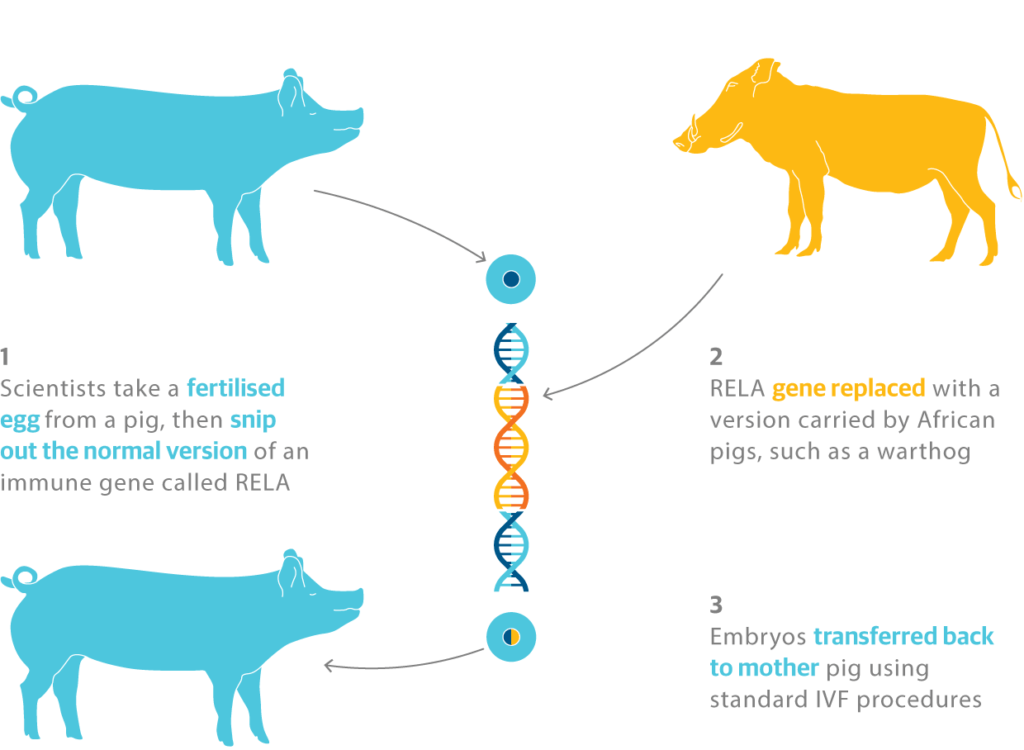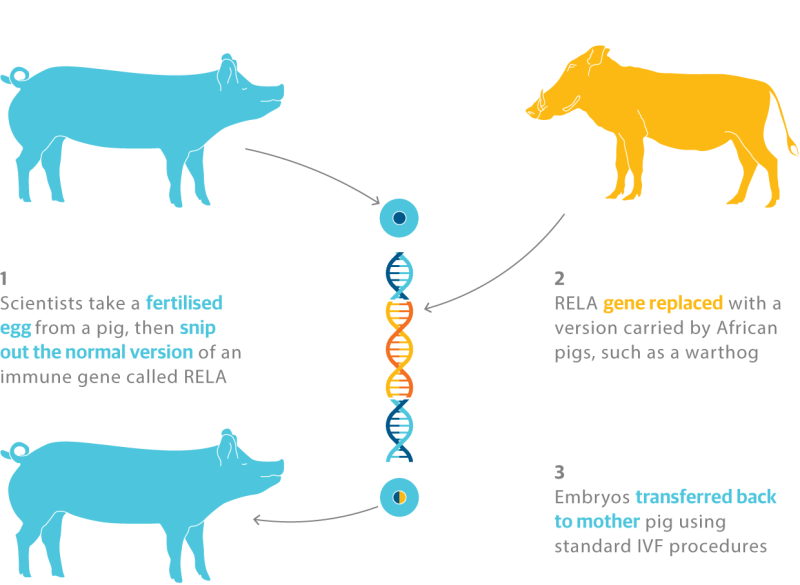On an isolated farm outside Edinburgh, pigs grunt eagerly as their food arrives. The barn has a typical farmyard whiff, and a litter of tiny piglets, born just hours earlier, lie with trotters outstretched and eyes sealed, as helpless as any newborns. Only the occasional fluorescent snout or trotter reveals that the building is home to one of the world’s most advanced genetic modification projects.
Prof. Bruce Whitelaw, head of developmental biology at the University of Edinburgh’s Roslin Institute, which is responsible for the pigs, believes the newborn piglets, which are designed to be resistant to the disease African swine fever, could be among the first commercially viable GM animals to have been created in Britain. The piglets are indistinguishable from other Large White variety pigs – except one letter of their genetic code has been flipped to make their immune system slightly closer to a warthog’s.
The breakthrough, he said, has been the development of new “ultra precise” gene editing tools that introduce changes in a way that is indistinguishable from naturally occurring mutations. The new techniques also overcome three major objections to GM in the past: the use of viruses to “carry” genetic changes into the pigs’ cells, the need to use antibiotic resistance genes in the modification process, which has been seen as an environmental threat, and the need for cloning.
If the African swine fever trial is a success – the scientists will know the results by autumn – they are likely to apply to the U.S. Food and Drug Administration for commercial approval.

The GLP aggregated and excerpted this blog/article to reflect the diversity of news, opinion and analysis. Read full, original post: Could these piglets become Britain’s first commercially viable GM animals?































